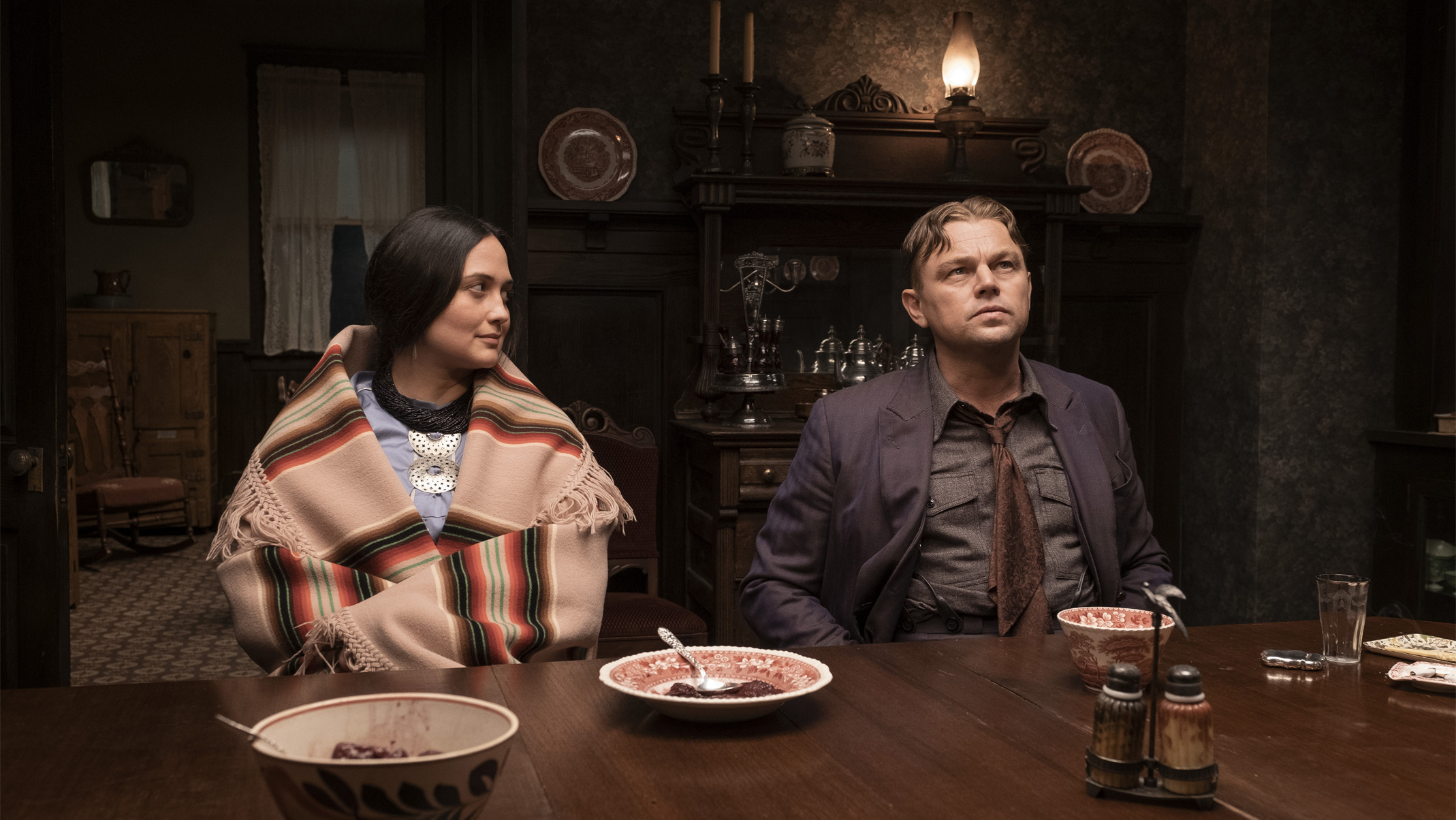Much like its legacy of slavery, American society has yet to fully reckon with the genocidal suppresion of Native Americans. In his latest epic "Killers of the Flower Moon", Martin Scorsese explores one particularly shameful chapter in the history of Native American relations, when the Osage Nation came under attack after the discovery of oil on their land. Shedding a necessary light on the greed, hatred and violence upon which the nation was founded, this powerful film is a vital, quintessentially American story.
Foreshadowing, the destruction to come, "Killers of the Flower Moon" opens with a ceremonial gathering of Osage Nation elders. As they symbolically bury a pipe representing their people's culture, they lament the impending loss of their identity due to the capitalist exploitation of their newfound oil riches. Indeed, we soon learn that that the Osage summarily rise to become the richest people per capita in the world. But this wealth comes at a heavy price, as White Americans seek to claim their fortunes for themselves. Among the Osage Nation is a woman named Molly, whose diabetes affliction is somewhat soothed by the courtship of the newly arrived Ernest Burkhart. But his motives come into question when a series of intermariages and subsequent murders result in transfers of Osage peoples' headrights to the White population. With these deaths coming dangerously close to her own door, Molly is forced to confront a horrifying conspiracy that threatens the survival of her people.
Crafted with Scorcese's typical attention to detail and vivid atmosphere, "Killers of the Flower Moon" is at once captivating and unsettling. With a considerable - yet engagingly paced - running time of 3 hours and 26 minutes, the rich screenplay takes its time to establish the setting, the characters and their relationships. Indeed, the film transports us viscerally back to 1920s Oklahoma, where the underlying tensions between traditional indigenous lifestyles and modern decadence are made visible through the juxtaposition of vast fields and ranches and the busy streets lined with saloons and other commercial establishments.
Underneath the performative civility and the Native Americans' prosperity, however, the dynamic between them and the White people is still emblematic of the wild west. But in this version of "cowboys vs Indians", Scorsese rejects the age old depiction of White cowboys as heroes. Indeed, every scene of violence inflicted on Native Americans is jolting in its brutality and its nonchalant heartlessness. Furthermore, the outstanding performances also pinpoint the victims and oppressors. As Molly, Lily Gladstone is the beating heart of the film, with a graceful presence that practically commands you to be still and notice her. Meanwhile, Leo DiCaprio skillfully downplays his usual charisma to embody a dim-witted scoundrel. And as William King Hale - the primary mastermind behind Osage murders - Robert Deniro gifts cinephiles yet another unforgettable performance, portraying a chillingly composed demeanor while orchestrating unimaginable evils.
Through the authentic performances and world-building, there's an almost docudrama-like feel to this masterful work of art and historical reflection. It's the kind of film that enlightens you and makes you want to learn. Apart from its compelling cross-genre filmmaking, it's that agitating effect that makes "Killers of the Flower Moon" such essential part of 2023's cinematic landscape.



No comments:
Post a Comment